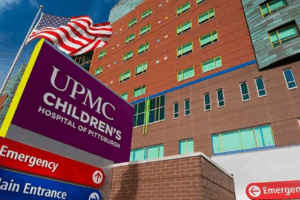A recent report from the Allegheny Conference on Community Development found Pittsburgh’s job growth was just 1.5% in the second quarter of 2024, lower than the national average. Along those lines, the city also suffers from weak demand in the office real estate sector with a 28.5% drop in office construction in 2024.
The slow job growth is coupled with sluggish visitor traffic in the downtown Golden Triangle and Cultural District areas, which have still not recovered to pre-pandemic levels. In Q2 2024, visitor traffic remains at a paltry 80% of where it stood in May 2019.
One area where Pittsburgh does not lag behind its peers is in tax revenue. According to the Allegheny Institute for Public Policy, Pittsburgh collects 44% more tax revenue per capita compared with peer cities, while also maintaining debt that’s 41% higher than comparable localities.
Where is this money going? City employees and their benefits. If Pittsburgh had a similar rate of employees per 1,000 people as its peers, the city would employ 1,100 fewer people than it does right now. The resulting salaries and benefits drain the city’s coffers without providing any economic benefits for the vast majority of the populace who are not paid by Pittsburgh’s taxpayers.
The strain on public services and lack of economic growth caused in part by Pittsburgh’s high-spending Democratic city government can best be illustrated by the latest news out of Pittsburgh Public Schools.
Pittsburgh Public Schools plans to close 16 schools and eliminate nearly all of the district’s magnet schools. Pittsburgh’s decision to eliminate its magnet schools stands in stark contrast with the country as a whole, which has seen the number of magnet schools more than double from 1,469 in 2001 to 3,015 in 2022.
One bright spot in the jobs department is Pittsburgh’s unemployment rate of 3.2%, which is better than both Pennsylvania and the nation at large. Pittsburgh isn’t heading towards the massive depopulation of the 1980s, but that’s a low bar to clear.
If Pittsburgh improves but continues to grow at a slower rate than comparable cities, then the City of Bridges will continue to fall behind fast-growing metros like Raleigh and Atlanta.
Pittsburgh’s economic picture remains stuck in a post-pandemic mindset, but without a focus on economic growth the city will struggle to catch up with its peers.











